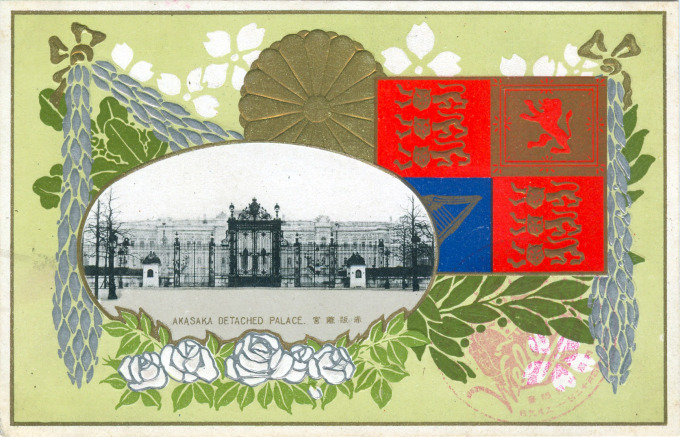
Embossed postcard commemorating the visit to Japan by the Prince of Wales (Edward VIII), who was provided residence at the Akasaka Detached Palace during his month-long state visit beginning in April, 1922. Then-Crown Prince Hirohito would not begin his own residence at the Detached Palace until 1923 opting, instead, to reside at the Takanawa Imperial Residence until his marriage to Princess Nagako.
See also:
Togu Gosho (Crown Prince’s Palace), c. 1920.
Imperial Palace (Meiji Palace) interiors, Tokyo, c. 1920.
“Beside the outer moat of the palace as it crossed the ridge line and entered the High City was the Akasaka Detached Palace, finished in 1908. It was built on the site, expanded by gifts and purchases, of the main Edo mansion of the Wakayama Tokugawa family … The new Akasaka palace was put up for the Crown Prince [the future Emperor Taisho], who, whether he wished it or not, had a far grander residence than his father.”
– Low City, High City: Tokyo from Edo to the Earthquake, Edward Seidensticker, 1982
“The Akasaka Detached Palace was built in the last decades of the Meiji period, allowing us to assess Japanese success in achieving their goal of Westernising the official state environment. The palace has become well known internationally since its refurbishment in 1968-1974 as the Geihinkan, or State Guesthouse.
“Its marble entrance portico has provided a dignified backdrop for welcoming speeches by visiting heads of state, while its sumptuous interior, bedecked in crystal chandeliers and gilded arabesques, has served as the setting for summit meetings of the great powers.”
– Architecture and Authority in Japan, by William Howard Coaldrake, 1996
- Looking through the front gate, Detached Palace, c. 1920.
- Tokyo streetcar in front of the Akasaka Detached Palace, c. 1910.
“The terrain that Akasaka Palace now occupies was part of the residence of Kishū Domain, one of the major branches of the ruling Tokugawa clan family. during the Tokugawa period. After the Meiji restoration, the Owari presented the land to the Imperial Household.
“Designed by the architect Katayama Tōkuma (a student of Josiah Conder), the Neo-Baroque structure modeled after the French palace of Versailles was constructed between 1899 and 1908 as a residence for the Crown Prince [Taisho, neé Yoshihito]. Originally it was named Togu Gosho [Palace for the Crown Prince] but was later renamed Akasaka Geihinkan [Detached Palace] when the Crown Prince’s residence was moved to the former Ōmiya Palace (former home of Empress Teimei, consort of Emperor Taisho) nearby on the same Akasaka estate grounds.
“The Akasaka Palace also incorporated many modern conveniences from the very beginning, including electricity, hot and cold running water, and central heating. It was among the first buildings in Japan (and perhaps one of the first major buildings in the world) to incorporate electromechanical air conditioning, which was first invented in 1902, only seven years before the palace was completed.
“After World War II the government of Japan relieved the Imperial household of Akasaka Palace. Several governmental offices were installed in the palace, including the National Diet Library which was founded in 1948, then the Cabinet Legislation Bureau, and finally the Organizing Committee of the 1964 Tokyo Olympics.
“It was decided in 1967 to renovate the former Akasaka Palace as the new State Guest House. The renovation was led by the architect Togo Murano and was completed in 1974.
“The first official state guest who stayed in the renovated palace was Gerald Ford in 1974, the first visit of an incumbent President of the United States to Japan. Since then, the palace has provided accommodations for state and official guests and a venue for international conferences, which have included the G7 summit meetings (1979, 1986 and 1993) and APEC summits.”
– Wikipedia
- The Asahi-no-Ma is named after the painting on the ceiling, depicting a goddess driving a chariot with the rising sun behind.
- Egypt Hall, Detached Palace, c. 1950.
- Dancing hall, Detached Palace, c. 1950.
- Garden and fountain, Detached Palace, c. 1950.


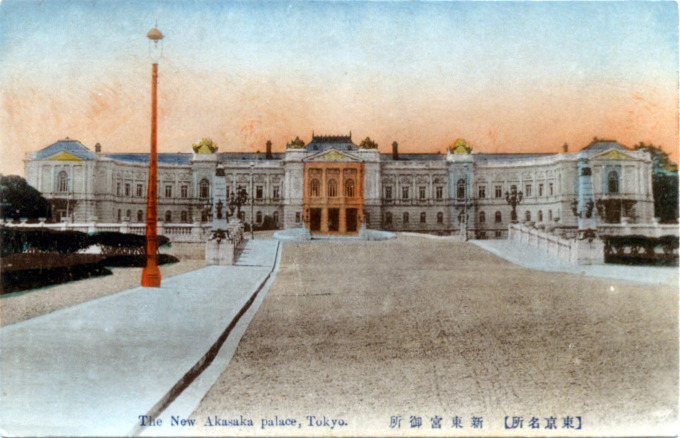
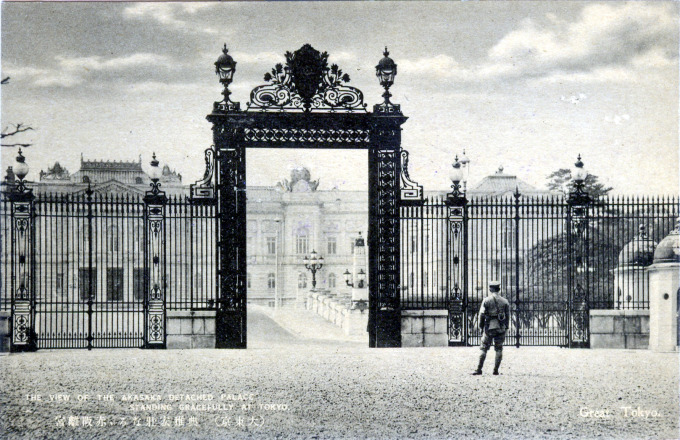
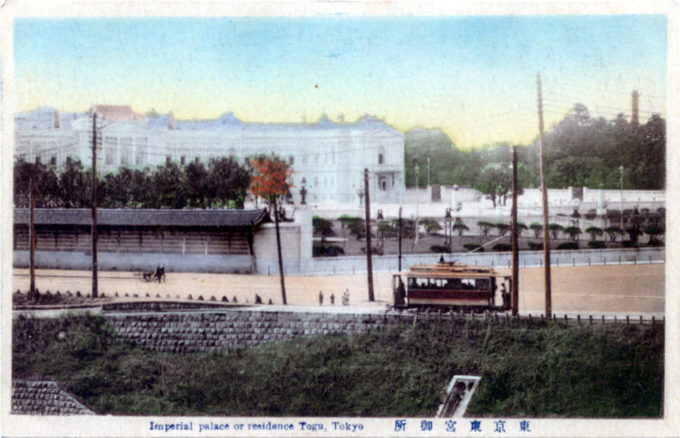
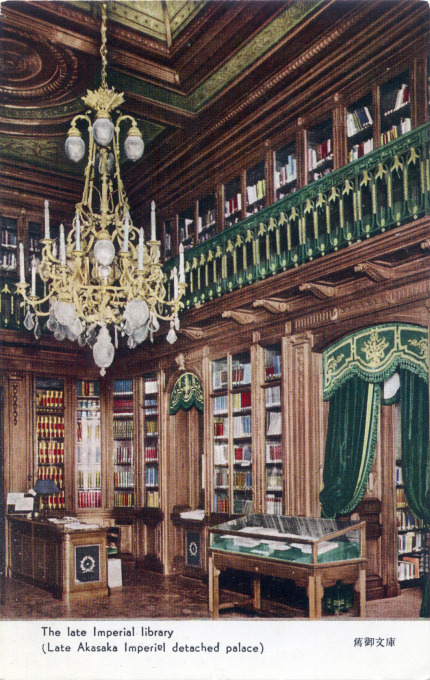
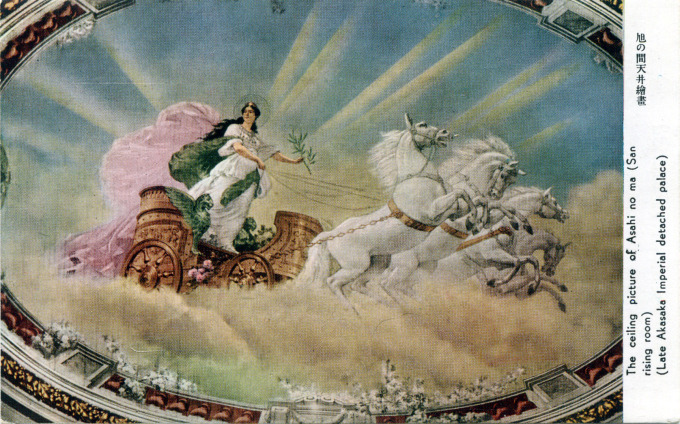
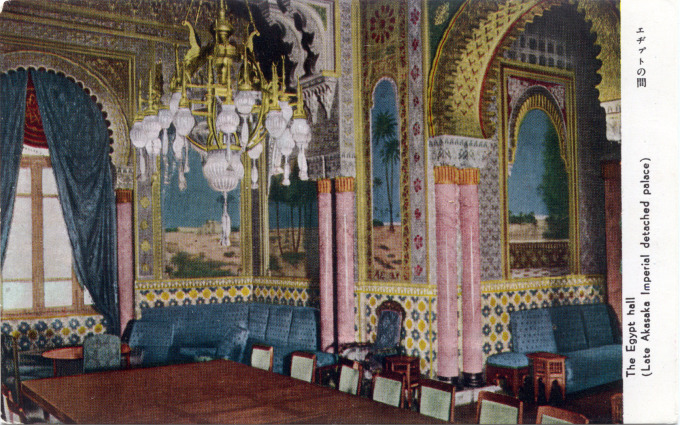
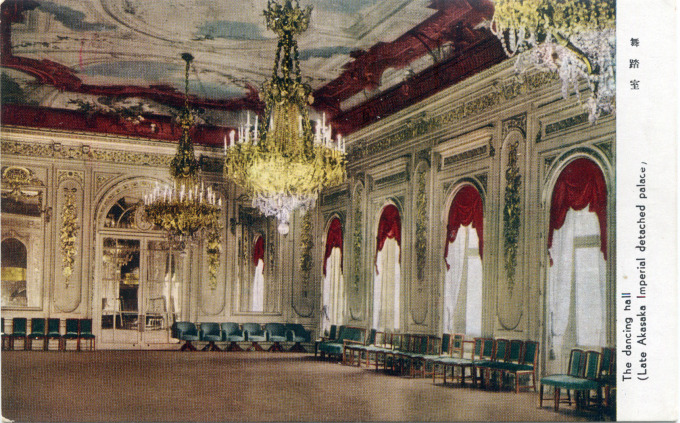
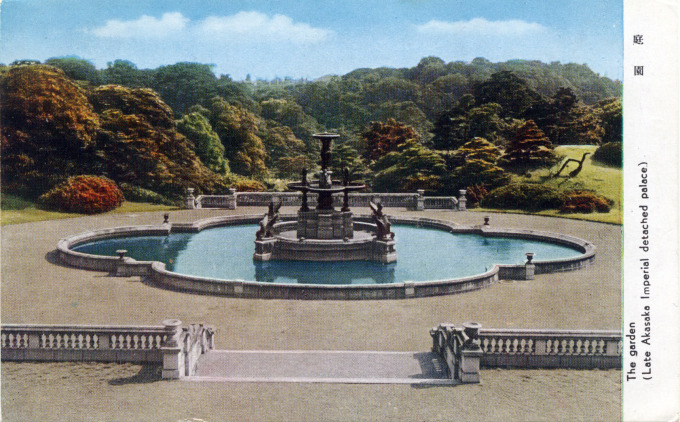
Pingback: Josiah Conder: Department of the Navy, Kasumigaseki, c. 1910 | Old Tokyo
Pingback: Togu Gosho (Crown Prince’s Palace), c. 1920. | Old TokyoOld Tokyo
Pingback: Imperial Palace (Meiji Palace) interiors, Tokyo, c. 1920. | Old TokyoOld Tokyo
Pingback: Omote-cho Palace of Prince Chichibu, Akasaka, Tokyo, c. 1940. | Old Tokyo